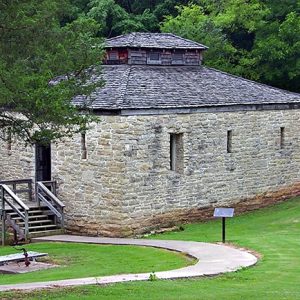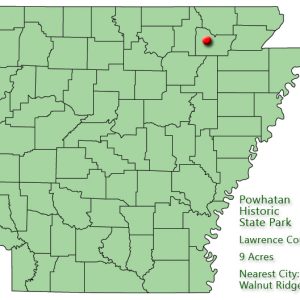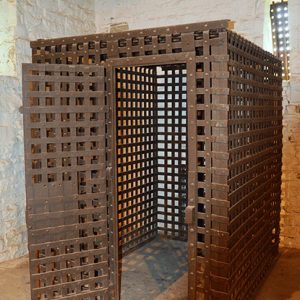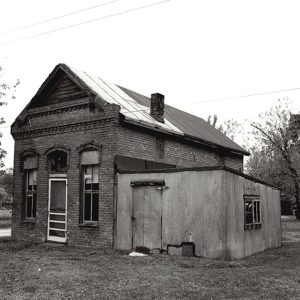calsfoundation@cals.org
Powhatan Historic State Park
| Location: | Lawrence County |
| Size: | 9.1 acres |
| Established: | March 28, 1970 |
Powhatan Historic State Park preserves a small nineteenth-century river port town in Lawrence County, once a hub of northeast Arkansas commerce, industry, and government. Located on the Black River at the juncture of the Ozark Plateau and the Arkansas Delta, Powhatan pioneers had the advantages of easy river access, plentiful resources in the foothills, and fertile land.
The first steamboat, the Laurel, arrived around 1829, beginning a series of landings that spanned over 100 years and stimulated civic and regional growth. Footpaths transformed into roads, a river ford into a ferry, and swampy delta into rich farmland, attracting merchants, farmers, and families. In 1837, the settlement name “Powhatan” was selected to honor the Virginia Native American chief, father of Pocahontas. The Civil War slowed the growth of the town, which then had a population between 400 and 500. After the war, with prosperity resuming, Powhatan was elected the Lawrence County seat of government in 1869. The first courthouse, completed on June 16, 1873, burned twelve years later. The replacement courthouse, its cornerstone laid in 1888, still dominates the landscape today. Historic industries of the area include timber, pearl buttons, zinc mines, and farming. The Kansas City-Memphis railroad bypassed the town in 1883, beginning the town’s slow decline. On August 27, 1963, the citizens of Lawrence County voted to move all county functions to Walnut Ridge, setting the stage for Powhatan’s rebirth as a historic community.
The Lawrence County Historical Society, working with the Lawrence County Development Council, saved the courthouse, as well as important territorial and early statehood records, and began a partial restoration process that was completed in 1970. Ownership was transferred to Arkansas State Parks in 1979, and additional renovations have restored the building to its early appearance. Other buildings renovated on their original foundations include the 1873 jail, the 1840s Ficklin-Imboden Log House, the circa 1887–88 Commercial Building, the 1890 Male and Female Academy, and the 1874 Methodist church. Powhatan Historic State Park encompasses all of these historic structures, except the Methodist church. Other parts of Powhatan’s remaining infrastructure include the ferry landing and remnants of a suspension bridge across the Black River. The Northeast Arkansas Regional Archives, a branch of the Arkansas State Archives, houses the historical documents extracted from the renovated courthouse and allows historical and genealogical research.
The park is open Tuesday through Saturday, 8:00 a.m. until 5:00 p.m., and Sunday from 1:00 p.m. to 5:00 p.m. The interiors of the buildings can be visited by guided tour only, with the exception of the visitor information room of the courthouse. Historical programs and workshops are available.
For additional information:
Arkansas State Parks–Powhatan Historic State Park. http://www.arkansasstateparks.com/powhatancourthouse/default.aspx (accessed August 17, 2023).
McLeod, Walter. Centennial Memorial History of Lawrence County. Walnut Ridge, AR: Lawrence County Historical Society, 1980.
The Staff of Arkansas State Parks
 Powhatan Courthouse
Powhatan Courthouse  Powhatan Jail
Powhatan Jail  Powhatan Historic State Park: Park Location
Powhatan Historic State Park: Park Location  Powhatan Jail Cell
Powhatan Jail Cell  Powhatan Male and Female Academy
Powhatan Male and Female Academy  Telephone Exchange Building
Telephone Exchange Building 




Comments
No comments on this entry yet.